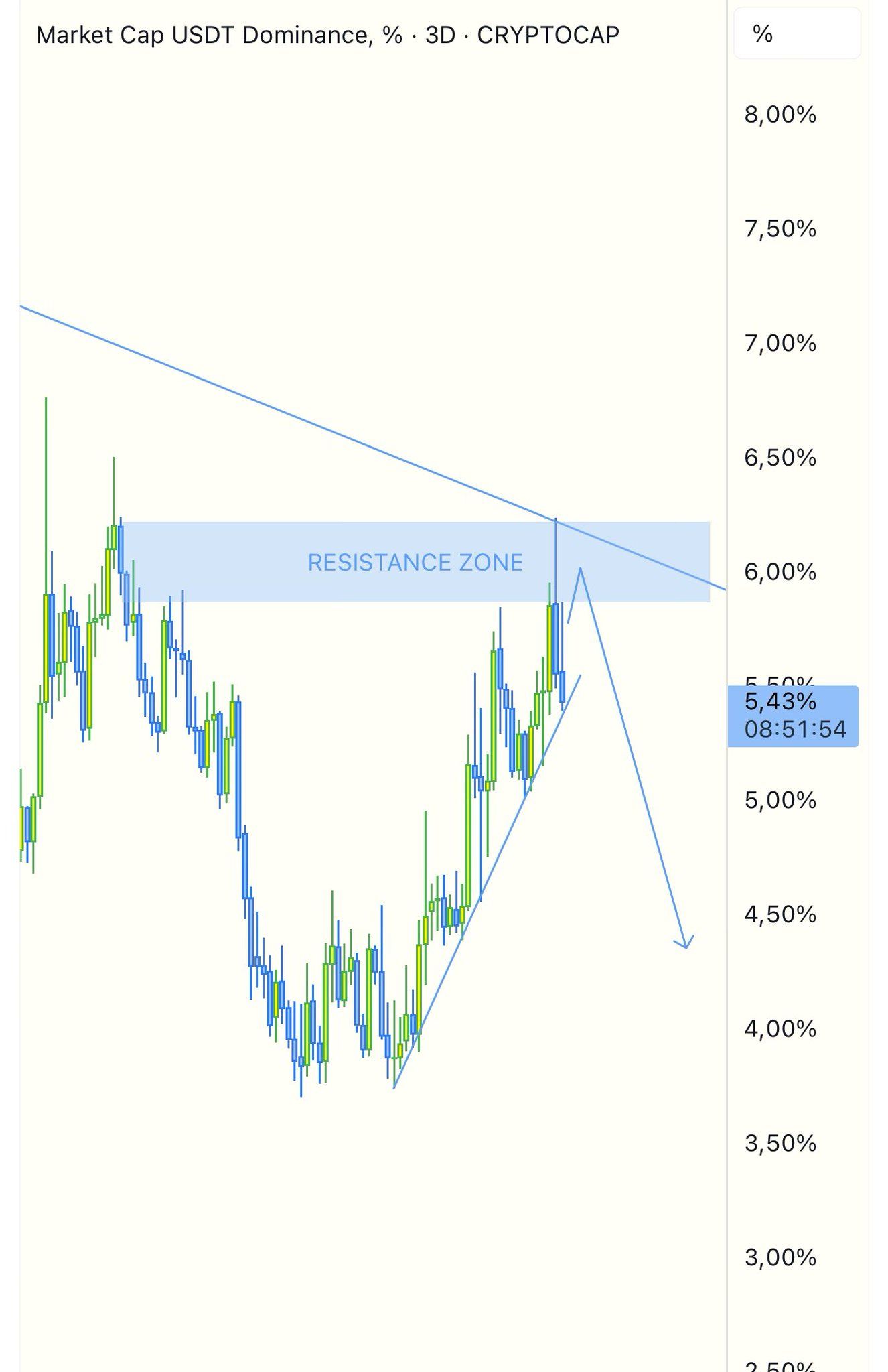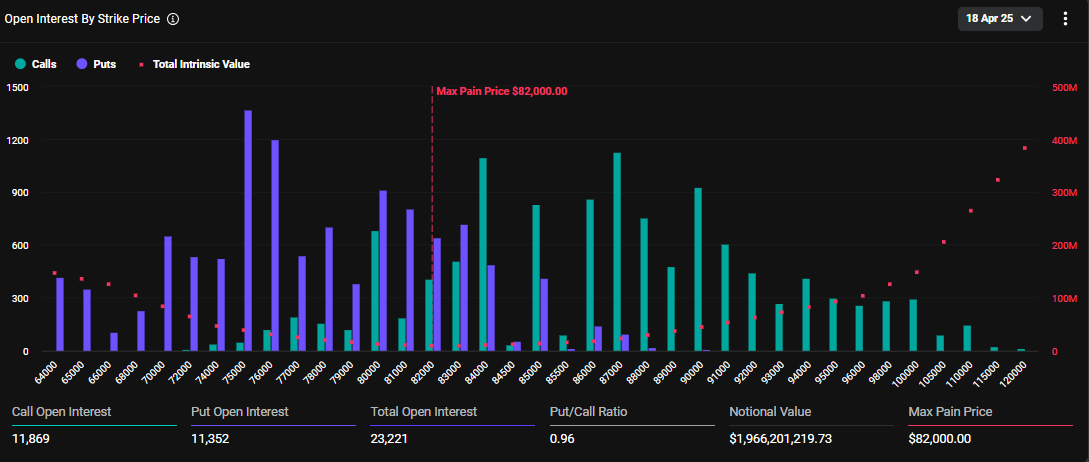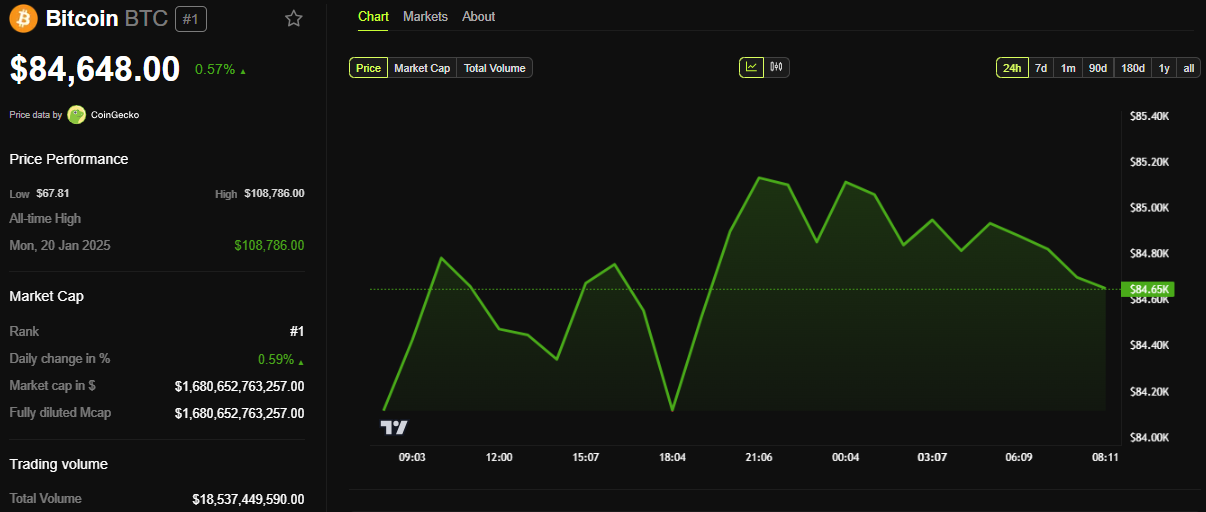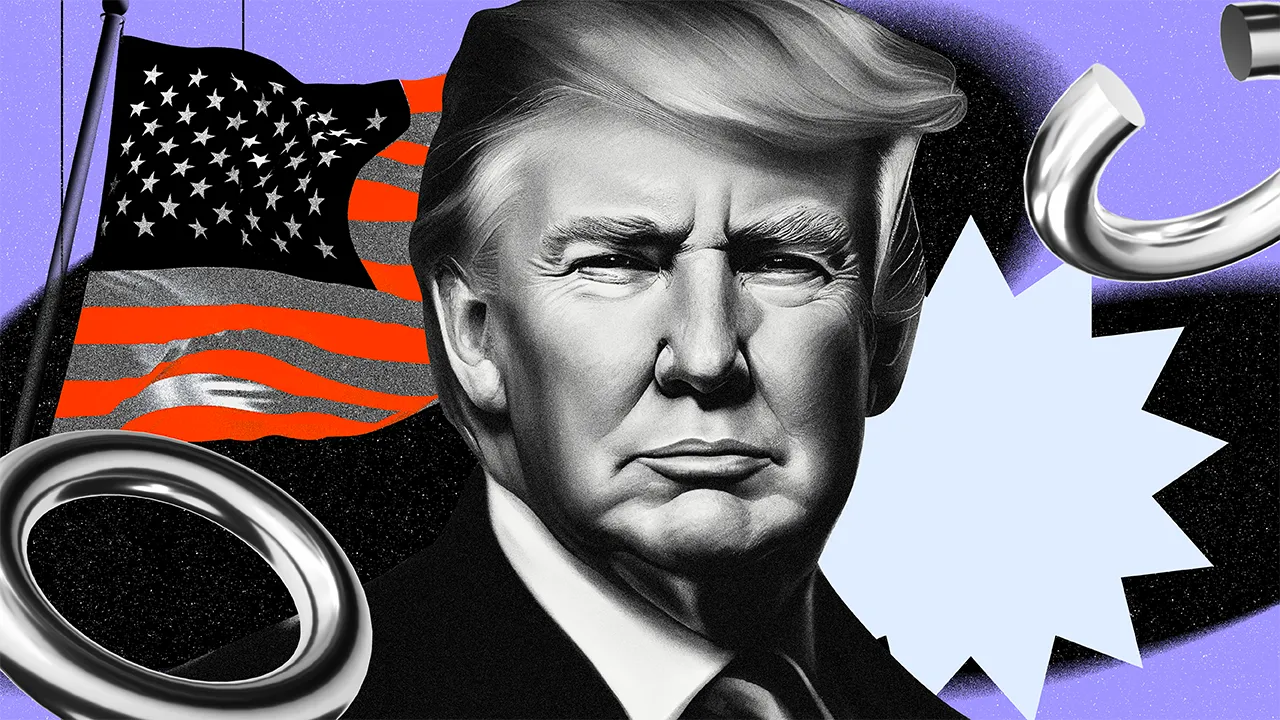Bitcoin
The Future of Decentralized Lending?

According to the World Bank, 1.4 billion adults around the world remain unbanked. The global financial system, despite its unbelievably vast infrastructure, falls short of serving the global population equitably on many counts.
For many, the glittering promise of financial freedom is not merely a matter of surviving the rat race but also a tale of inflation and documentation.
Bitcoin-Backed Credit: A Lifeline for the Unbanked Globally
Millions of people remain underbanked or entirely unbanked due to strict credit requirements, high fees, and limited accessibility. From Palestinian refugees with no proof of citizenship, single women with no employment contract in Egypt, or the countless people facing exorbitant inflation rates of over 120% in Argentina.
During the 2008 financial crisis, countless individuals in the US lost their homes due to predatory lending practices, showcasing the system’s inherent vulnerabilities. Even today, high inflation erodes savings in fiat currencies, leaving consumers with fewer options to preserve their wealth.
Meanwhile, small businesses worldwide face rejection from banks due to rigid creditworthiness standards. One may even argue that money is perhaps the most violent political tool in the weaponry bag of the powers that be.
This gap in accessibility and fairness reveals the need for alternative financial systems. Bitcoin-backed credit offers a viable solution, overcoming both the political agendas and the economic limitations that keep poor people poor.
What Are Bitcoin-Backed Credit Systems?
Bitcoin-backed credit systems allow borrowers to use their BTC holdings as collateral to secure loans without selling their assets. These systems function similarly to secured loans, where a borrower pledges an asset to access liquidity.
If the borrower fails to repay, the lender liquidates the collateral to recover the funds. Unlike traditional loans, these systems do not require credit scores or extensive documentation, making them more accessible to crypto holders.
“High inflation, currency devaluation, and low trust in centralized banks could drive demand for Bitcoin-backed loans. Bitcoin’s stability and decentralized nature make it attractive in volatile economies, and DeFi platforms offer lower barriers and better terms compared to traditional lending,” Kevin Charles, co-founder of The Open Bitcoin Credit Protocol told BeInCrypto in an interview.
The market for Bitcoin-backed credit has grown, with key players like BlockFi, Ledn, Celsius, and Nexo leading the way. These platforms allow users to retain exposure to BTC while accessing fiat or stablecoin liquidity. The simplicity and appeal of these systems have fueled their adoption in recent years, one reason why they have faired peacefully throughout bear markets.
One major advantage of BTC-backed credit is the ability to retain exposure to Bitcoin’s price appreciation. Borrowers can unlock liquidity without selling their BTC, allowing them to benefit from potential long-term gains.
Additionally, Bitcoin-backed loans act as a hedge against inflation by offering an alternative to the ever-devaluing fiat currencies. A crypto holder in Argentina, for example, would be able to secure themselves against their dwindling national currency and even make extra cash.
According to Bankrate, USD now has an inflation rate of 2.4%, which is notably the lowest it has been since February 2021. Meanwhile, BTC has an inflation rate of just 1.7%.

BTC-backed systems also promote financial accessibility. Unlike traditional banks, which require stringent credit checks, Bitcoin-backed credit platforms primarily assess the value of the collateral. This approach opens the door to individuals in regions with limited banking infrastructure, offering a lifeline to the unbanked.
For those who hold true to the ethos of decentralization, global inclusion is the real selling point. Bitcoin-backed credit has the potential to provide financial services to these populations, bridging the gap left by traditional systems. Central banks and global financial institutions remain privy to the whims and shifts of the ever-changing political playground.
In a nation like Lebanon, whose residents primarily transact in USD due to its effectively dead LBP, citizens were barred from withdrawing their own dollars when the central bank faced a dollar shortage crisis. For reference, one USD equals 89,550 LBP. In neighboring Egypt, rumors of impounded USD accounts also began circulating before being denied by central bank officials.
“Bitcoin-backed credit operates on a global, decentralized network, meaning access is not dependent on income, location, or credit history. By using Bitcoin as collateral, anyone holding the asset can access loans without traditional gatekeepers. Early DeFi platforms show increasing adoption in regions with limited banking access, highlighting the potential for financial inclusion,” Charles added.
However, even with all of these advantages, duality is the law of the universe. Bitcoin-backed credit systems are no cure-all solution; they carry significant risks.
The most glaring is Bitcoin’s price volatility. A sudden drop in BTC’s value can trigger margin calls, forcing borrowers to either add collateral or face liquidation. During the crypto market crash in 2022, countless borrowers lost their collateral as prices plummeted. According to Charles, there are ways to mitigate volatility.
“Volatility is managed through over-collateralization and automated liquidations. By requiring more collateral than the loan value, platforms create a buffer against price drops. Additionally, real-time monitoring ensures loans are adjusted to market conditions, maintaining stability even during price crashes,” Charles added.
The Three-Eyed Trojan Horse: Centralization’s Re-emergence
Even so, Bitcoin-backed credit systems have socio-economic implications that warrant examination. The first is that while these platforms democratize access to credit for crypto holders, they risk creating new financial gatekeepers. Wealthy crypto investors, or “crypto whales,” stand to benefit the most, while average users with limited holdings may find themselves excluded.
Whales, or addresses holding more than 100,000 BTC, hold 21% of the total Bitcoin supply. This dynamic means perpetuating wealth concentration within the crypto space as well. If that does happen, we can wave goodbye to the promise of inclusion.

The second concern is traditional financial institutions. They are increasingly infiltrating the Bitcoin-backed credit market through acquisitions and regulatory influence.
Banks like Goldman Sachs and JPMorgan have begun exploring crypto-backed lending, signaling a convergence of decentralized and traditional finance. In November, Bloomberg reported that Goldman Sachs is preparing to launch a new company focused on digital assets. While these developments bring legitimacy, they also raise concerns about co-opting Bitcoin’s decentralized ethos.
Then enters the third and final Trojan horse: government oversight. It presents both opportunities and challenges for Bitcoin-backed credit systems.
Regulation can legitimize these platforms, ensuring consumer protection and stability. However, excessive regulation could stifle innovation and compromise decentralization.
For example, the European Union’s MiCA framework has introduced clarity but also imposed stringent compliance requirements, causing friction within the crypto industry. Binance, the world’s largest crypto exchange by trading volume, had to disable copy trading services for its European users in June after MiCA was announced.
Another issue that may impact accessibility is know-your-customer (KYC) standards, which may hinder those who rely on crypto wallets because they lack sufficient personal documentation. Policymakers often argue that platforms without strict KYC oversight risk assisting criminals in money laundering operations. In 2023, Turkiye even rolled out a new set of crypto laws aimed at tightening up KYC standards.
“We’re witnessing a re-centralization of a system designed to be free. The challenge is finding balance without diluting Bitcoin’s core principles,” Charles posed.
Platforms like Aave and Sovryn exemplify decentralized approaches to Bitcoin-backed credit. These systems rely on smart contracts to automate transactions, reducing the need for intermediaries and ensuring transparency. However, decentralization comes with its own challenges, including scalability, security vulnerabilities, and regulatory gray areas.
Still, success stories exist. Borrowers have used Bitcoin-backed loans to fund businesses, pay medical bills, or navigate economic uncertainty without selling their BTC. Conversely, others have faced significant losses due to liquidation during market downturns, highlighting the high stakes of these systems.
In conclusion, Bitcoin-backed credit represents both a financial revolution and a cautionary tale. Its future hinges on its ability to scale, remain accessible and adhere to Bitcoin’s ethos of decentralization.
As traditional finance enters the space and regulatory frameworks evolve, the challenge will be maintaining the balance between innovation and inclusivity. Whether these systems democratize finance or merely shift the gatekeeping remains to be seen.
Disclaimer
Following the Trust Project guidelines, this feature article presents opinions and perspectives from industry experts or individuals. BeInCrypto is dedicated to transparent reporting, but the views expressed in this article do not necessarily reflect those of BeInCrypto or its staff. Readers should verify information independently and consult with a professional before making decisions based on this content. Please note that our Terms and Conditions, Privacy Policy, and Disclaimers have been updated.
Bitcoin
What Does This Mean for Altcoins?

Bitcoin’s (BTC) market dominance has surged to 64%, reaching its highest level in over four years.
However, experts remain divided on what this means for the future. Some predict an impending altcoin season, and others caution that Bitcoin’s dominance could continue to suppress altcoins.
What Does Bitcoin’s Rising Dominance Mean?
For context, Bitcoin dominance (BTC.D) refers to the percentage of the total cryptocurrency market capitalization that BTC holds. It is a key indicator of Bitcoin’s market strength relative to other cryptocurrencies. A rising dominance suggests that Bitcoin is outperforming altcoins, while a decrease may signal growing interest or investment in other digital assets.
The metric has been steadily increasing since late 2022. As of the latest data, it surged to 64%, marking highs last seen in early 2021.

Notably, Benjamin Cowen, founder of Into The Cryptoverse, highlighted that the number is much higher when excluding stablecoins.
“Excluding stable coins, Bitcoin dominance is now at 69%,” Cowen revealed.
The rise in Bitcoin dominance has sparked debate among analysts about its implications for altcoins. Cowen believes there will be a correction or downward movement in altcoins before any substantial gains can be expected in the market. This implies that the altcoin season may not be imminent yet.
“I think ALT/ BTC pairs need to go down before they can go up,” he stated.
Nordin, founder of Nour Group, also expressed caution. He stressed that Bitcoin dominance is nearing the levels seen during the peak of the 2020 bear market.
“This isn’t just a BTC move. Its capital rotating out of alts,” he noted.
Moreover, Nordin warned that a break above 66% could intensify selling pressure on altcoins. This, in turn, could delay the altcoin season.
“Bitcoin dominance back to 64%. No Alt seasons in 2024 or 2025,” analyst, Alessandro Ottaviani, predicted.
On the other hand, analyst Mister Crypto predicts that Bitcoin’s dominance may follow a long-term descending triangle pattern. A descending triangle typically suggests bearish momentum, where the price or dominance gradually decreases as lower highs are formed.
However, this could prolong its market control before a broader correction allows altcoins to gain traction.

Another analyst mentioned that Bitcoin dominance is currently testing the resistance zone between 64% and 64.3%. Therefore, a possible retracement may be on the horizon. Should this retracement occur, altcoins could begin to gain traction, with some potentially emerging as top performers in the market as capital shifts away from Bitcoin.
“However, a breakout from this zone could mean further declines for alts,” the analyst remarked.
Finally, Junaid Dar, CEO of Bitwardinvest, offered a more optimistic view. According to Dar’s analysis, if Bitcoin’s dominance drops below 63.45%, it could trigger a strong upward movement in altcoins. This, he believes, would create an ideal opportunity to profit from altcoin positions.
“For now, alts are stuck. Just a matter of time,” Dar added.
Tether Dominance Signals Potential Altcoin Season
Meanwhile, many analysts believe that the trends in Tether dominance (USDT.D) signal a potential altcoin season. From a technical analysis standpoint, USDT.D has reached a resistance zone and may be due for a correction, suggesting the possibility of capital flowing from USDT into altcoins.
“The USDTD is in a rejection zone, as long as it does not close above 6.75% it will be favorable for the market,” a technical analyst wrote.

Another analyst also stressed that the USDT.D and USD Coin dominance (USDC.D) have reached resistance, forecasting an incoming altcoin season. Doğu Tekinoğlu drew similar conclusions by observing the combined chart of BTC.D, USDT.D, and USDC.D.
As Bitcoin’s dominance climbs, investors are closely monitoring these technical and on-chain signals. The interplay between Bitcoin’s strength and stablecoin dynamics could dictate whether altcoins stage a comeback this summer or face further consolidation. For now, Bitcoin’s grip on the market remains firm.
Disclaimer
In adherence to the Trust Project guidelines, BeInCrypto is committed to unbiased, transparent reporting. This news article aims to provide accurate, timely information. However, readers are advised to verify facts independently and consult with a professional before making any decisions based on this content. Please note that our Terms and Conditions, Privacy Policy, and Disclaimers have been updated.
Bitcoin
Babylon’s TVL Drops 32% After Massive Bitcoin Unstaking

Babylon, a platform enabling native Bitcoin (BTC) staking, recorded a notable unstaking event on April 17. Approximately $1.26 billion worth of BTC was withdrawn from the protocol.
The move resulted in a significant decline in Babylon’s total value locked (TVL). Moreover, the price of its native token, BABY, also dipped.
Babylon’s TVL Drops 32% After Massive BTC Unstaking
Blockchain analytics firm Lookonchain alerted users about the unstaking on X (formerly Twitter).
“About 5 hours ago, 14,929 BTC($1.26 billion) was unstaked from Babylon,” the post read.

This move triggered a sharp drop in the platform’s TVL. According to data from DefiLama, Babylon’s TVL dropped from $3.9 billion to $2.6 billion in just a day, representing a decline of 32.7%. Moreover, only 31,502 BTC remain staked in the protocol at press time.
That’s not all. The BABY token was also not immune to market pressures. According to BeInCrypto data, the token depreciated by 9.8% over the past day alone. At the time of writing, the altcoin was trading at $0.8.

The unstaking led to widespread speculation about the platform’s stability and the broader implications for Bitcoin-based decentralized finance (DeFi) protocols.
“What’s going on. I don’t waste my time partaking in staking BTC, but this can be concerning. You don’t just see so much unstaking in such a short window,” a user said.
Nonetheless, Lombard Finance quickly moved to calm investor concerns. The Bitcoin restaking protocol, built on Babylon, clarified that the withdrawal was part of a planned transition to a new set of finality providers.
“To carry out the transition to our new set of Finality Providers, the Lombard Protocol has begun the process of unstaking BTC from the Lombard Finality Provider,” Lombard Finance stated.
The post emphasized that this process was a necessary step in the evolution of the platform. In addition, the company reassured investors that the withdrawn funds are expected to be restaked once the unbonding process concludes.
The unstaking event follows closely on the heels of Babylon’s airdrop earlier this month. 600 million BABY tokens—representing 6% of the token’s total supply—were distributed to early adopters, including Phase 1 stakers, Pioneer Pass NFT holders, and contributing developers.
Shortly after the airdrop, $21 million worth of Bitcoin was unstaked within 24 hours. This suggests a pattern of capital withdrawal that has intensified with the latest event.
Disclaimer
In adherence to the Trust Project guidelines, BeInCrypto is committed to unbiased, transparent reporting. This news article aims to provide accurate, timely information. However, readers are advised to verify facts independently and consult with a professional before making any decisions based on this content. Please note that our Terms and Conditions, Privacy Policy, and Disclaimers have been updated.
Bitcoin
What Good Friday Options Expiry Means for Bitcoin & Ethereum

On Good Friday, over $2.2 billion worth of Bitcoin and Ethereum options contracts expire today.
It comes as crypto markets continue to reel from macroeconomic uncertainty. President Donald Trump is pressuring the Federal Reserve (Fed) to cut interest rates, but the chair, Jerome Powell, will not budge.
Over $2.2 Billion Options Expire Today
Today, April 18, amid Good Friday celebrations, 23,221 Bitcoin (BTC) options contracts will expire. The notional value for this Friday’s tranche of expiring Bitcoin options contracts is $1.966 billion, according to data on Deribit.
The put/call ratio is 0.96, suggesting a prevalence of purchase options (calls) over sales options (puts).
As the Bitcoin options expire, they have a maximum pain or strike price of $82,000; at this point, the asset will cause the greatest number of holders’ financial losses.

Similarly, crypto markets will witness the expiry of 177,130 Ethereum contracts, with a notional value of $279.789 million. The put-to-call ratio for these expiring Ethereum options is 0.84, with a maximum pain of $1,600.
This week’s options expiry event is slightly smaller than what crypto markets witnessed last week on Friday. As BeInCrypto reported, approximately $2.5 billion worth of BTC and ETH options expired then, with short-term dips bringing put demand.

Traders and investors must closely monitor today’s developments as options expiry could lead to price volatility. Nevertheless, put-to-call ratios below 1 for Bitcoin and Ethereum in options trading indicate optimism in the market. It suggests that more traders are betting on price increases.
Meanwhile, analysts at Deribit highlight low volatility and flat skew. While this suggests a calm market, historical data from CoinGlass suggests post-expiry price swings are common, potentially signaling an upcoming move.
“With volatility crushed and skew flat, is the market setting up for a post-expiry move?” they posed.
Blackswan Event Likely, Greeks.live Analysts Say
Analysts at Greeks.live shed light on current market sentiment, echoing the calm outlook. However, they note that the market is predominantly bearish to neutral. Traders expect continued choppy action before potentially revisiting $80,000 to $82,000.
As of this writing, Bitcoin was trading for $84,648, slightly above its strike price of $82,000. Based on the Max Pain theory, prices will likely move toward this strike price as options near expiry.

Citing a mild sentiment, Greek.live analysts ascribe the calm to Trump not putting out a lot of news this week. Nevertheless, they anticipate more trade wars, heightened uncertainty, and volatility.
“We expect the trade and tariff wars to be far from over, and the uncertainty in the market will continue for a long time, as will the volatility in the market,” Greeks.live wrote.
They also ascribe the outlook to Powell’s comments, which created downward pressure as 100 bps rate cut expectations for the year were reduced. This led to crypto correlation with traditional markets.
Against this backdrop, Greeks.live says the probability of a black swan event is higher, where a rare, unexpected event that has a significant and often disruptive impact on the market occurs.
“…it is now a period of pain when the bulls have completely turned to bears, and investor sentiment is relatively low. In this worse market of bulls turning to bears, the probability of a black swan will be significantly higher,” they explained.
They urge traders to buy out-of-the-money (OTM) put options. An option is classified as out-of-the-money when its strike price is less favorable than the current market price of the underlying asset. This means it has no intrinsic value, only time value (the potential for it to become valuable before expiration).
Disclaimer
In adherence to the Trust Project guidelines, BeInCrypto is committed to unbiased, transparent reporting. This news article aims to provide accurate, timely information. However, readers are advised to verify facts independently and consult with a professional before making any decisions based on this content. Please note that our Terms and Conditions, Privacy Policy, and Disclaimers have been updated.
-

 Ethereum23 hours ago
Ethereum23 hours agoEthereum Investors Suffer More Losses Than Bitcoin Amid Ongoing Market Turmoil
-

 Altcoin24 hours ago
Altcoin24 hours agoDogecoin Price Breakout in view as Analyst Predicts $5.6 high
-

 Ethereum16 hours ago
Ethereum16 hours agoEthereum Fee Plunges To 5-Year Low—Is This A Bottom Signal?
-

 Altcoin23 hours ago
Altcoin23 hours agoTron Founder Justin Sun Reveals Plan To HODL Ethereum Despite Price Drop
-

 Market20 hours ago
Market20 hours agoEthereum Price Fights for Momentum—Traders Watch Key Resistance
-

 Altcoin20 hours ago
Altcoin20 hours agoExpert Predicts Pi Network Price Volatility After Shady Activity On Banxa
-

 Market18 hours ago
Market18 hours agoIs XRP’s Low Price Part of Ripple’s Long-Term Growth Strategy?
-

 Market24 hours ago
Market24 hours agoHedera Struggles Under $0.17 Despite Strong Support























